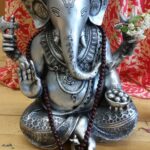Individual module study and immersion
Choose 1 or more modules to suit your interest, budget and schedule.

Need more information? What to do next….
- We will announce details of our next training soon. Please contact info@living-yoga.ie to register your interest, sate your curiosity or ask your questions. See you downstream!
- Want to have an experience of the practice? Check out Lisa’s sample online classes on Ekhart Yoga, see her YouTube Channel or listen to hear on a podcast.
- Contact our Training Co-ordinator at info@living-yoga.ie with any questions. We are happy to organise a phone call to answer your individual queries, help you plan your training or customise your learning. Please request our logistics document for suggestions relating to travel, subsistence and accommodation.
- Once you’re ready, request an application form and submit it with your deposit payment in the link above. We’ll get back to you within two weeks of receiving your form. Upon acceptance, you’ll receive a welcome pack, reading list and full payment details. We’ll refund your deposit if you are not eligible and if possible try and help you find a more suitable course.
- Check our website, join the Living Yoga Facebook page, or sign up to our newsletter for up-to-date news on events in your locality and to hear about all the other goodies on offer.
Scroll down for module descriptions, logistics, practicalities, fees, eligibility, certification, accreditation and assessment information.
Registration, Logistics and Practicalities
Venue
Loreto Abbey, Dalkey, County Dublin, Ireland
Training Times
10.00-13.00 and 14.30-17.30 each day with the addition of a supervised practice from 08.00-09.30 on days 2 to the last day on all modules.
Registration
Registration is open from 9.15 on the first day of each module
Eligibility
In order to apply, you need to be a qualified Yoga teacher or a dedicated and experienced student of Yoga with a regular practice of over 5 years. Otherwise, all we ask of you is…..enthusiasm to learn, innate curiosity, a sense of humour, an open mind and openhearted love of Yoga
Deposits and Fees
Modules may be booked individually if a) you wish to gain insight and inspiration into a particular field of study or b) you intend to complete the full 350/500 hour course and be accredited over more than one iteration**
We’re reviewing our fees and structure at the moment. In previous iterations each four-day module costs €500. We asked for a deposit of €200 per module, payable on application, to secure your place. The balance payment of €300 for an individual module was due two months before the start date for that module or on acceptance.
You cannot book Integration 1 without completing all the previous 8 modules, or Integration 2 without completing the previous 12 modules.
**If you plan to join us over more than one course delivery and complete the full 500 or 350, please note that we retain the right to make changes to the course format, costs and location. Courses run approximately every two years.
Certification
This training is certified with Living Yoga. Certificates of attendance for each module will be awarded to students who wish to use the course for CPD/CEU’s with their professional accrediting organisation.

‘Two words come up for me a lot when thinking of my experience on the LYATT: curiosity and permission. I learned so much about the body and all it did was stoke an endless curiosity and wonderment in my own. Permission because there was always space to explore my own experience without there being one right answer. All of this shifted my teaching from a mode of ‘do this, feel that’ to ‘try this and what do you feel?’ This shift, which was a scary one, has been so worth it, seeing the impact on my own practice and my students’ practice, and it continues to ripple out into all areas of my life.’

‘This was the first Teacher Training that enriched my life as much off the mat as on it. It helped me to embody the theoretical knowledge that I been gathering for 15 years as a student and a teacher. My practice and teaching took on a new direction and a new depth. My students have journeyed with me as enthusiastically and passionately as myself, ever curious about the fruits of the training. This work is like a very quiet but powerful revolution.’

‘This training is a prolific immersion of contemporary anatomy and the human body’s relationship to the universe as a whole. Those with passion for Yoga or any aspect of the human body and mind’s architecture will reap in abundance, being inspired and challenged in all or any of the modules offered amid its faculty of passionate international teachers, all of whom conduct ongoing research and investigation in their individual field of expertise.’